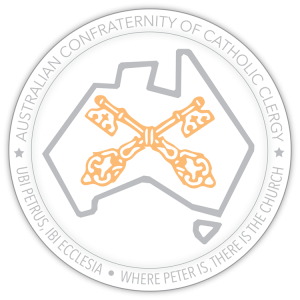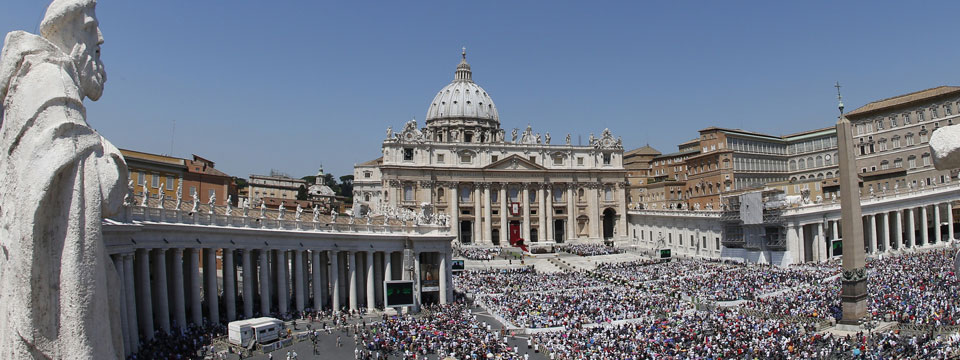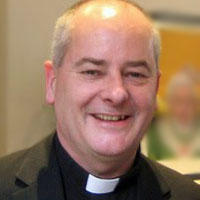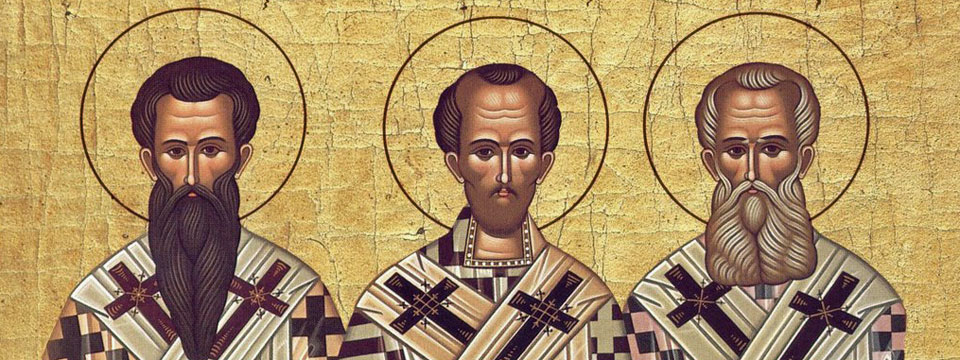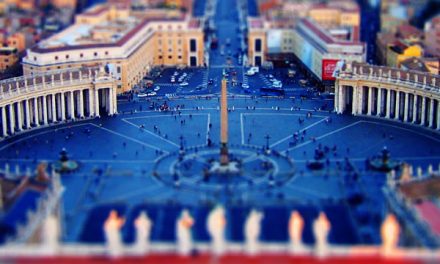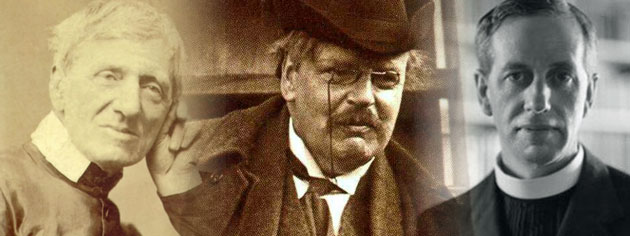How the Council taught us to understand the mystery of the Church
The tract on the Church has seen a significant change of emphasis during the past 60 years. In some presentations, it was in the past considered sufficient to show that the Church was divinely founded, that it had a hierarchical constitution (which included jurisdiction and infallibility), and that it had four marks. As a part of positive theology, this formed the basis for establishing all the other theses of dogmatic theology, since once the Church’s infallibility is proven, reference can be made to the teaching of the magisterium to prove the other doctrines of the Church.
Theologians also considered such things as the communion of saints, and the relationship between the Church and Christ, and the Holy Spirit, but these aspects of the Church tended to appear as secondary, perhaps more “spiritual” considerations than the hard-headed business of establishing the magisterium as the basis of the rest of positive theology.
In fact, the Church was not generally dealt with as a separate subject in theology by the Fathers or the medieval theologians. St Thomas, in his Summa Theologica did not treat of the Church as a subject in itself. The first systematic treatises on the Church were written in response to the conciliarist movements of the 15th century which viewed the Church solely as the congregation or assembly of the faithful, and downplayed or denied the hierarchical aspect of the Church. The reformers denied the authority of tradition and the magisterium, and the power of jurisdiction of the Pope and the Bishops: in reaction to this, treatments of the Church focussed on these elements.
The liturgical movement and discussions over the themes of the first Vatican Council led to a reappraisal among some theologians who looked more closely at the organic life of the Church in relation to the Kingdom of God and the life of Christ made present in the Church. Since the publication of the encyclical Mystici Corporis Christi by Pope Pius XII in 1943, this renewed emphasis has become part of the mainstream of Catholic thought, looking at the nature of the Church in herself, as sacrament, people of God, body of Christ. This impetus was taken up at the second Vatican Council in the Dogmatic Constitution on the Church Lumen Gentium which reaffirmed the primacy and infallibility of the Pope but also presented a series of reflections on the Church from other aspects, especially those directly found in the scriptures.
Unfortunately, as in other areas, there was an unbalanced approach after the Council which made it appear that there was a rupture between the teaching of Vatican II and everything that had gone before. It was as though the Church was not now hierarchical, did not have jurisdiction, and was not infallible any longer. When Blessed Pope John Paul II exercised the power of jurisdiction and the papal magisterium, it was a shock to some who imagined that such days were over.
My aim in this paper is to steer a path between the two extremes. I will try to give due weight to the scriptural and patristic themes promoted by Pope Pius XII and Vatican II while not losing sight of the importance of such questions as hierarchy, jurisdiction and infallibility. I have chosen to speak on the Council’s Dogmatic Constitution on the Church because I think that more than any of the other documents, it marks a genuine and positive development in doctrine.
Although we should avoid treating Vatican II naively as a new starting point as though nothing of value came before, it is reasonable in the case of the Church to use Lumen Gentium as a point of reference for themes concerning the Church, since it presents to us a synthetic treatment of the Church with the authority of the magisterium whereas in traditional manuals, the Church had been dealt with under the heading of revelation.
In the first paragraph, Lumen Gentium speaks of the Church as sacrament:
… the Church is in Christ like a sacrament or as a sign and instrument both of a very closely knit union with God and of the unity of the whole human race.{{1}}
The Church is a sacrament because she is a visible reality and the means of grace. Being sacrament means that the Church must make known the mystery of Christ Himself and make effectively present the work of salvation which He accomplishes. Thus everything in the Church is subordinated to Christ and the salvation of mankind. This is recognised, for example, in the canonical principle Salus animarum suprema lex.{{2}} (The supreme law is the salvation of souls.)
This essential purpose of the Church does not exclude such works in the world as contribute to her mission. Hence the Church owns property in order to worship, to teach, and to care for the sick. She is engaged in the promotion of culture at the service of the Gospel, and she is engaged in the public square, and in political activity in order to safeguard the sanctity of human life, social justice, and the freedom to worship and to practice the faith. In any worldly activity, the Church as a whole, and her members individually, are conscious that “Here we have no lasting city, but we seek the city which is to come.” (Heb 13.14)
Writing in 1977, Cardinal Ratzinger commented on the reception of Lumen Gentium:
More than ten years after the promulgation of the text, it must be admitted that the concept of the Church as a sacrament is not yet deeply entrenched either in the consciousness of the Church or in theology. While the expression “people of God” spread with the speed of wind and today is equally at home in the vocabularies of bishops, pastoral councils, professors and ordinary believers, the word “sacrament” as a designation for the Church is in no one’s mouth. Yet the Council intended the two expressions to be mutually complementary and explanatory; only against the background provided by the concept “sacrament” can the concept “people of God” become meaningful.{{3}}
This interdependence is set out in the second Vatican Council’s Pastoral Constitution on the Church in the Modern World:
While it helps the world, and receiving many things from it, the Church tends to this one thing alone, that the Kingdom of God should come and that the salvation of the whole human race should be inaugurated. For every good, which the People of God, in its earthly pilgrimage, can offer to the human family comes from this, that the Church is the “universal sacrament of salvation”, simultaneously showing and working the mystery of the love of God for man.{{4}}
Ratzinger, points out that the Church is a people only because she is united by God in Christ. Only through understanding the Church as sacramentum can we understand what it is for her to be populus Dei, “People of God.”
The importance of understanding the Church as communion was emphasised by the Congregation for the Doctrine of the Faith in a letter devoted to the topic. The congregation noted at the beginning that it was important to recognise this aspect of the Church together with other images spoken of in Lumen Gentium:
[…] some approaches to ecclesiology suffer from a clearly inadequate awareness of the Church as a mystery of communion, especially insofar as they have not sufficiently integrated the concept of communion with the concepts of People of God and of the Body of Christ, and have not given due importance to the relationship between the Church as communion and the Church as sacrament.{{5}}
People of God
The fathers of the second Vatican Council devoted the second chapter of Lumen Gentium to the People of God. Although this is a scriptural idea, it was had not been common to treat of this theme explicitly or at length; the Dogmatic Constitution therefore signalled a development in the way that this theme was used in speaking of the Church.
A point that is often missed in discussion of this theme is that being a People is not an arbitrary disposition but is related to the nature of the human person as created by God. We are created as social beings who flourish in community. At a purely natural level, we are “members one of another” and therefore God’s will is to save us as a people:
God, however, does not make men holy and save them merely as individuals, without bond or link between one another. Rather has it pleased Him to bring men together as one people, a people which acknowledges Him in truth and serves Him in holiness.{{6}}
Although some of the shallower interpretations of the concept of community in the Church were rightly criticised by theologians such as Ratzinger after the Council, the basic truth that we are saved in community is crucial to understanding the nature of the Church and of our relationship with Christ and with each other.
Fulfilment of Israel
Lumen Gentium draws out the link between the new People of God and the People of God which was called and formed by God in the Old Testament. The covenant formed with the people of Israel was a preparation for the new covenant in Christ and the foundation of the new Israel, the Church. In Ezekiel 11.20, for example, we find the classic expression “you will be my people and I will be your God.” In the prophecy of Jermiah, there is a messianic note to this expression, related to the establishment of the new covenant:
Behold, the days are coming, says the Lord, when I will make a new covenant with the house of Israel and the house of Judah […] I will put my law within them, and I will write it upon their hearts; and I will be their God, and they shall be my people. (Jer 31.31,33)
St Peter witnesses to the establishment of the new People of God and shows that the primitive Church was conscious of a living link of continuity with the people of Israel:
But you are a chosen race, a royal priesthood, a holy nation, God’s own people, that you may declare the wonderful deeds of him who called you out of darkness into his marvellous light. Once you were no people but now you are God’s people; once you had not received mercy but now you have received mercy. (1 Pet 2.9-11)
This passage is quoted by Lumen Gentium and shows us that the People of God is not simply an association but a body that is united in the sacramental life of the Church through the common priesthood. The community is not self-generated. As the People of God, it is formed by God, taught by God and fed by God. The sacraments of the Church are not at the disposal of the people as though they were constructs of the community, they are the means by which, according to its nature, the community actually comes into being and works.
Full incorporation, “links” and mission
Although everyone is indeed called to belong to the People of God, it was made clear earlier in the Constitution that not everyone in fact belongs to it:
So it is that that messianic people, although it does not actually include all men, and at times may look like a small flock, is nonetheless a lasting and sure seed of unity, hope and salvation for the whole human race.{{7}}
Later, Lumen Gentium spelt out what constitutes full incorporation into the Church:
They are fully incorporated in the society of the Church who, possessing the Spirit of Christ accept her entire system and all the means of salvation given to her, and are united with her as part of her visible bodily structure and through her with Christ, who rules her through the Supreme Pontiff and the bishops.{{8}}
Those of other Christian Churches and communities are “linked in many ways” (plures ob rationes coniunctam) especially the Orthodox Churches of the East, but also the separated ecclesial communities of the West who are “joined with us in the Holy Spirit” in a certain way.{{9}} Those who have not yet received the Gospel are also “ordered towards the people of God in various ways” (ad Populum Dei diversis rationibus ordinantur.) Specific mention is made of the Jews and Muslims, and what is good and true is held to be a preparation for the Gospel.{{10}} Thus Lumen Gentium introduced an approach to non-christian religions which was taken up in Nostra Aetate and later clarified in Dominus Iesus. Nevertheless, the Constitution did not intend, by this affirmation of what is good and true in other faiths, to downplay the missionary mandate of the Church; the fact that the People of God does not include all people means that the Church has a missionary mandate to bring Christ to the world.{{11}}
Ultimately the missionary mandate of the Church is a continuation of the work of Christ which was prophesied unintentionally by Caiaphas:
He did not say this of his own accord, but being high priest that year he prophesied that Jesus should die for the nation, and not for the nation only, but to gather into one the children of God who are scattered abroad. (Jn 11.51-52)
The old covenant “type” of the Church
Lumen Gentium speaks of the eternal plan of God who decreed “to raise men to a participation of the divine life”{{12}} and “determined to call together in the holy Church those who believe in Christ.”{{13}} The Church was prefigured from the beginning of the world and prepared for in a wonderful way in the history of the people of Israel and by the old covenant.
The constitution points out that the people of Israel were already called “the Church.” Where the Septuagint translates the Hebrew Qahal with the word ekklesia, modern translations often give “assembly” which obscures the verbal resonance that is obvious for those who read the scriptures in Greek. So, for example, the people ask Moses:
Why have you brought the assembly of the Lord into this wilderness, that we should die here, both we and our cattle? (Num 20.4 RSV)
but the word used for assembly in the Septuagint is ekklesia.{{14}}
The “Church” of the Old Testament prefigured the Church of Christ. It was distinct in being a Church that was defined on racial and national grounds, whereas the Christian Church is called Catholic or universal, a fundamental difference which was the focus of disputes even between the apostles themselves.
The assembly of the Lord had its own sacred liturgy, prescribed by the Lord in the books of the Law. There was also a teaching authority which the prophet Malachi affirms:
For the lips of a priest should guard knowledge, and men should seek instruction from his mouth, for he is the messenger of the Lord of hosts (Mal 2.7)
Our Lord himself recognised this authority to teach:
The scribes and the Pharisees have sitten on the chair of Moses. All things therefore whatsoever they shall say to you, observe and do: but according to their works do ye not; for they say, and do not. (Matt 23.2-3)
We can therefore see the people of Israel as a type of the Church, with various elements that were to be fulfilled in the Christian Church.
In terms of prophecy, there are many messianic texts in the Old Testament which point to the mystery of the Church in Christ. To take one example the 22nd psalm tells of a future assembly, congregation or Church (qahal – ekklesia) which will be universal:
I will tell of thy name to my brethren; in the midst of the congregation I will praise thee. […] From thee comes my praise in the great congregation (= “Church”); my vows I will pay before those who fear him. […] All the ends of the earth shall remember and turn to the Lord; and all the families of the nations shall worship before him. (Ps 22.22-27)
The spiritual and liturgical exegesis of the psalm applies it to Christ, the suffering servant: this is a definitive application since Christ uses it himself. In this latter part of the psalm, Christ, in prophecy, is seen to be speaking of the sacrifice of praise that he offers in the assembly, the call of the people of God to praise Him, but also the call to all those who seek the Lord, to the ends of the earth, and from all nations.
Scriptural images versus “models” of the Church
In the first chapter of Lumen Gentium, the council fathers set out various images of the Church, taken from the scriptures.
Just as in the old Testament the revelation of the Kingdom is often conveyed by means of metaphors, so now the inner nature of the Church is made known to us by various images which, taken either from pastoral life or agriculture, from building and also from family life and betrothals, are prepared in the books of the Prophets.{{15}}
The different ways in which the scriptures, and especially Christ Himself, speak of the Church draw us to ponder the nature of the Church under various metaphors. Taken together, they help us to build a balanced understanding of the Church so that the mystery of the Church itself can be a part of prayerful theological reflection. The manner of considering the Church under different scriptural and theological images underlines our approach to specific doctrinal questions about the Church. We should also remember that Lumen Gentium also spoke of the Church as the body of Christ: this way of speaking about the Church was not discarded, nor could it be, since it is one of the important images used by St Paul.
Unfortunately this way of thinking about the Church has been misunderstood. In the 1970s, Avery (later Cardinal) Dulles wrote a book on different “models” of the Church.{{16}} This was widely influential as a guide to interpreting the teaching of Lumen Gentium. The five models presented the Church as
- Institution
- Mystical communion
- Sacrament
- Herald
- Servant
Although the book examines the “strengths and weaknesses” of each model and sets out to “integrate” them into an overall understanding of the Church, it became fashionable for people to identify themselves with one or other “model” as though there were various possible choices that one could make of how to characterise the Church, or how to “be Church.” This language has led to people saying that they are happy with the Church as servant but not with the Church as institutional. It is usually the “institutional” model that is held in less esteem, not surprisingly, since “institution” is always going to sound less attractive than the other terms.
Cardinal Dulles in his later life clarified that he did not intend for his work to be seen as encouraging a choice between different “models” but there is still a tendency in some catechetical programmes to give the impression that we can choose one or other model, or that one or other model might be more psychologically suited to us. For example, there is an online quiz
to determine which of the first 5 models of the Church proposed by Dulles in his book best describes your image of the Church.{{17}}
Whilst this is a travesty of the work of Cardinal Dulles, it shows that it is still necessary to be careful in using terminology such as “model” for different ways of describing the Church. The “institutional”, or better, hierarchical nature of the Church is an essential part of the way that we think of, and describe the Church, not an optional image for those of a more “rigid” personality, or an element that can be discarded in “my image of the Church.” As Lumen Gentium points out:
But, the society structured with hierarchical organs and the Mystical Body of Christ, a visible gathering and a spiritual community, a Church enriched with earthly and heavenly goods, should not be considered as two things; rather they form one complex reality which comes together with a human and divine element.{{18}}
A definition of the Church
After considering various images and ways of speaking about the Church in scriptural terms, Lumen Gentium offers us a concise, but rich summary of the nature of the Church:
This is the one Church of Christ which in the Creed we profess as one, holy, catholic and apostolic, which our Saviour, after His Resurrection, handed on to Peter to shepherd, committed to him and the other apostles to extend and rule, and erected for ever as “the pillar and ground of the truth”. This Church constituted and ordered in the world as a society, subsists in the Catholic Church, governed by the successor of Peter and by the Bishops in communion with him, although outside its structure, many elements of sanctification and of truth are found, which as gifts proper to the Church of Christ, impel towards catholic unity.{{19}}
The meaning of the word “subsistit” has been the subject of a particular clarification from the Congregation for the Doctrine of the Faith:
In number 8 of the Dogmatic Constitution Lumen gentium ’subsistence’ means this perduring, historical continuity and the permanence of all the elements instituted by Christ in the Catholic Church, in which the Church of Christ is concretely found on this earth.{{20}}
The question of elements of sanctification and truth being found outside the visible structure of the Church was explained in the declaration Dominus Iesus.{{21}} This affirmed that,
[…] in connection with the unicity and universality of the salvific mediation of Jesus Christ, the unicity of the Church founded by him must be firmly believed as a truth of Catholic faith.
The Catholic faithful are required to profess that there is an historical continuity – rooted in the apostolic succession – between the Church founded by Christ and the Catholic Church.{{22}}
Regarding the elements of sanctification and truth to be found outside the structure of the Church, the Declaration said:
it needs to be stated that “they derive their efficacy from the very fullness of grace and truth entrusted to the Catholic Church.”{{23}}
Believing the Church
Henri De Lubac notes how the Roman Catechism is careful to explain why in the Apostles’ Creed we do not say “Credo … in ecclesiam” but “Credo … ecclesiam.”{{24}}
We believe in the three Persons of the Trinity, Father, Son and Holy Spirit in the sense that we put our faith in them. But now, changing our manner of speech, we profess to believe the Holy Church, and not “in” the Holy Church. So through this linguistic distinction God, the author of all things, is distinguished from all his creatures, and in receiving all the precious gifts which he has conferred on the Church we attribute them to his divine goodness.{{25}}
This concern to avoid divinising the Church has a long tradition which de Lubac surveys with examples from St Cyprian onward. He quotes the example of Alcuin teaching children. When he asks them whether they believe in the Church, they are taught to answer
No, I believe that the Church is holy but I do not believe in her because she is not God, but ‘the summoning’ or the ‘gathering together’ of Christians.{{26}}
The excess to which believing in the Church could lead was reprobated by Cardinal John of Torquemada who observed at the Council of Basle that the members of the council genuflected when the words “et in unam sanctam ecclesiam” were pronounced.
Having conceded the importance of not equating the Church with God, and having recalled the teaching of the second Vatican Council that the Church is the servant of the word, de Lubac goes on to point out that in one aspect, the Church is identified with Christ, and warns of the opposite danger of making the Church to be merely human and her activity to be the celebration of man by man. He recalls the words of St Peter Chrysologus: “He believes in God who, in God, confesses the holy Church.”{{27}}
The Church is the means by which we come to faith in God, and is the place in which God dwells. She is also the guarantor of faith because of the work of Christ in her. Therefore the “I” who believes is not me in an isolated sense as though faith could exist apart from the Church as a purely personal choice; rather “I” am making a profession of faith in communion with the whole Church as one united with the whole communion of saints.
When answering the question of whether it is suitable for the articles of faith to be embodied in a symbol, St Thomas emphasises the role of the Church. An objector says that not all have living faith and therefore there should not be a creed for everyone to say “I believe.” St Thomas replies that
The confession of faith is drawn up in a symbol in the person, as it were, of the whole Church, which is united together by faith. Now the faith of the Church is living faith…{{28}}
This identification of the Church as gathering and guaranteeing the belief of its members is found also in the Sacred Liturgy. In the Te Deum, we sing:
Te per orbem terrarum sancta confitetur ecclesia. (The holy Church throughout the whole world confesses you.)
and in the Roman Liturgy, one of the prayers before Holy Communion asks “look not on our sins but on the faith of your Church.”{{29}}
A sinner, even one whose faith is almost dead, can affirm Credo on the grounds that his affirmation is made in union with the whole Church which bears for him the burden of belief when he is unable to bear it himself. De Lubac tells a story of Teilhard de Chardin realising this powerfully on his first visit to Rome:
He saw this Roman Church as indestructible in its ‘paradoxical and humble assurance of representing the terrestrial extremity of a bow stretching from terrestrial man to what is beyond man’; he found in her ‘the security of an inviolable faith’, and this experience gave him not only a feeling of profound admiration but also a renewed assurance in his personal faith: through the Church and in the Church was renewed and strengthened the bond which, through her and in her, had been already made between him and ‘the personal Centre of the Universe.’{{30}}
There is no opposition between a Christian’s faith and the faith of the Church: the Christian believes the Church and, in so doing, receives from Christ through her the foundation and deepening of his faith in God.
At this time, we should take care that our love for the Church should include also that filial love for the Holy Father which is the mark of a true Catholic. As the Provost of the London Oratory recently put it after the election of Pope Francis:
Whatever personal feelings – euphoric, neutral or negative – an individual might experience towards the person of any particular pope are neither here nor there as far as being a good Catholic is concerned. There is, however, a very definite and proper Catholic response to the election of a new Pope. We receive the Successor of St Peter into our hearts with love, and we support him with our loyalty and with our prayers.
Let us give thanks to God for his grace in making us members of the one, holy, catholic and apostolic Church founded by Christ, cherish always the gift of communion with the See of Peter, and do our part to build up the Body of Christ.
[[1]]Lumen Gentium n. 1.[[1]]
[[2]]“The salvation of souls is the supreme law” cf. Codex Iuris Canonici. Canon 1752.[[2]]
[[3]]Ratzinger, J. The Principles of Catholic Theology. Ignatius. 1987. page 45. (This book is a collection of articles published over a number of years by Ratzinger. The Acknowledgements gives the sources for the various sections.).[[3]]
[[4]]Gaudium et Spes n. 45.[[4]]
[[5]]Congregation for the Doctrine of the Faith. Letter to the Bishops of the Catholic Church on some aspects of the Church understood as Communion. (Communionis Notio) 1992. n. 1.[[5]]
[[6]]Lumen Gentium n. 9.[[6]]
[[7]]Lumen Gentium n. 9.[[7]]
[[8]]Lumen Gentium n. 14.[[8]]
[[9]]Lumen Gentium n. 15.[[9]]
[[10]]Lumen Gentium n. 16.[[10]]
[[11]]Cf. Lumen Gentium n. 17.[[11]]
[[12]]Lumen Gentium n. 2.[[12]]
[[13]]Lumen Gentium n. 2. The original text is “Credentes autem in Christum convocare statuit in sancta Ecclesia.” (Here, as in many other places, the official English translation is not a sure guide to the original.)[[13]]
[[14]]Lumen Gentium gives references also to Neh 13.1 and Deut 23.1ff.[[14]]
[[15]]Lumen Gentium n. 6.[[15]]
[[16]]Dulles, A. Models of Church, Doubleday (1974).[[16]]
[[17]]Catholic Faith Education: Models of the Church. At http://catholicfaitheducation.blogspot.com/2008/05/models-of-Church.html (Accessed 22/6/11).[[17]]
[[18]]Lumen Gentium n. 8.[[18]]
[[19]]Lumen Gentium n. 8.[[19]]
[[20]]Congregation for the Doctrine of the Faith. Responses to some questions regarding certain aspects of the doctrine of the Church. 29 June 2007.[[20]]
[[21]]Congregation for the Doctrine of the Faith. Declaration “Dominus Iesus” on the unicity and salvific universality of Jesus Christ and the Church, (2000).[[21]]
[[22]]Dominus Iesus n. 16.[[22]]
[[23]]Ibid.[[23]]
[[24]]De Lubac, H. La foi chrétienne. (1970) Aubier-Montaigne. Translated by Trethowan, I. And Saward, J Christian Faith. The Structure of the Apostles’ Creed. (1986) London. Geoffrey Chapman. Chapter 5.[[24]]
[[25]]Catechismus ex decreto Concilii tridentini ad parochos. (1566) Pars I, c. 10, q. 20.[[25]]
[[26]]Alcuin. Disputatio puerorum. 11 (PL 101.1137) cited in de Lubac p. 90.[[26]]
[[27]]“Ipse in Deum credit, qui in Deum sanctam Ecclesiam confitetur.” St Peter Chrysologus. Serm. 59 (PL 52.360).[[27]]
[[28]]St Thomas Aquinas. Summa Theologica. 2a 2ae q. 1, art. 9, ad 3.[[28]]
[[29]]ne respicias peccata nostra/mea sed fidem ecclesiae tuae. In the older use, the prayer was said quietly by the priest and referred to peccata mea. In the newer form, the prayer is said aloud and refers to peccata nostra. In view of de Lubac’s discussion, the difference is significant.[[29]]
[[30]]De Lubac. op cit. p. 98.[[30]]
